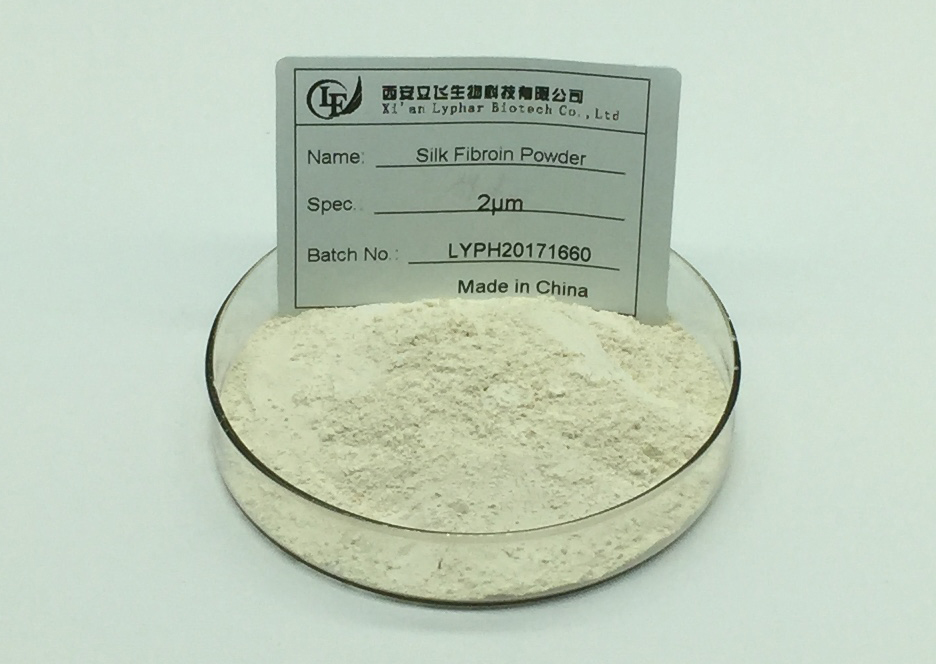Silk fibroin is a natural protein fiber derived from the cocoons of silkworms (Bombyx mori) and is one of the most renowned and versatile materials in the world. Here’s a brief overview of its origin, nature, and introduction:
Origin of Silk Fibroin:
Silk fibroin originates from silkworms, particularly the domesticated silkworm species known as Bombyx mori. These silkworms are primarily raised for the production of silk.

Nature of Silk Fibroin:
Protein Structure: Silk fibroin is a protein, and its primary structure consists of a repeating sequence of amino acids. The two main proteins in silk fibroin are fibroin and sericin, with fibroin being the primary structural protein. The primary amino acid found in fibroin is glycine, followed by alanine and serine.
Biocompatible: Silk fibroin is biocompatible, making it suitable for various medical and cosmetic applications. It has been used in sutures, wound dressings, and as a biomaterial for tissue engineering due to its biocompatibility.
Biodegradable: Silk fibroin is biodegradable, meaning it can naturally break down in the environment over time. This property is essential in applications where long-term stability is not required.
Tensile Strength and Flexibility: Silk fibers are known for their remarkable tensile strength and flexibility. This makes them incredibly durable and able to withstand a significant amount of stress without breaking.
Brief Introduction of Silk Fibroin:
Silk fibroin has a long history dating back to ancient China, where it was initially developed over 5,000 years ago. It was a closely guarded secret for centuries, as silk was a valuable commodity for trade and a symbol of luxury.
Silk fibroin has a wide range of applications:
Textiles: It’s commonly used in the textile industry to make luxurious and smooth fabrics, including silk clothing and bedding.

Medicine: Due to its biocompatibility, silk fibroin has been used in medical applications such as sutures, artificial ligaments, and drug delivery systems.
Cosmetics: Silk proteins are used in cosmetic products for their moisturizing and conditioning properties, particularly in hair care and skincare products.
Biotechnology: In biotechnology, silk fibroin is used as a biomaterial for tissue engineering and regenerative medicine.
Nanotechnology: Researchers have explored the use of silk fibroin in various nanotechnology applications, including drug delivery and tissue scaffolds.
In summary, silk fibroin is a natural protein fiber with a rich history and a wide range of applications, from textiles to medicine and biotechnology. Its unique properties, such as biocompatibility and biodegradability, make it a valuable material for diverse industries.
